Abstract
1. High frequency preganglionic nerve stimulation increases the acetylcholine (ACh) stores of the cat superior cervical ganglion. The increase reaches a maximum 20 min following 60 min conditioning stimulation at 20/s. The effect of this conditioning on ACh release in ganglia perfused with plasma and test stimulated at 4 or 5/s has been studied, and the relationship of ACh stores to ACh release in conditioned ganglia determined.
2. The rate of ACh release in response to test stimulation at 5/s for 15 min, starting 20 min following conditioning, was 174% of the rate found in unconditioned ganglia. The ACh stores of the conditioned ganglia at the end of the test were calculated to be 173% of the control ganglion stores.
3. When test stimulation at 4/s was started 5 min following conditioning, the rate of ACh release showed a variable pattern of increase and decrease over a 75 min period. The mean peak rate of release was about 150% of the control rate, and the duration of potentiation was about 75 min.
4. When conditioned, unperfused ganglia were tested by stimulation at 4/s the ACh stores were found to increase and decrease in parallel with the increase and decrease in ACh release rates found in the perfusion experiments.
5. It was found also that the magnitude of the increase in ACh stores and ACh release was related to the amount of ACh in the ganglionic stores at the onset of conditioning, being greater for the ganglia with the smaller initial stores.
6. It is concluded that the potentiation of ACh release in ganglia conditioned in this way is directly related to the accompanying increase in ACh stores.
7. The possible significance of alterations of ACh stores and ACh release as a mechanism of modulatory control of ganglionic transmission is discussed.
Full text
PDF
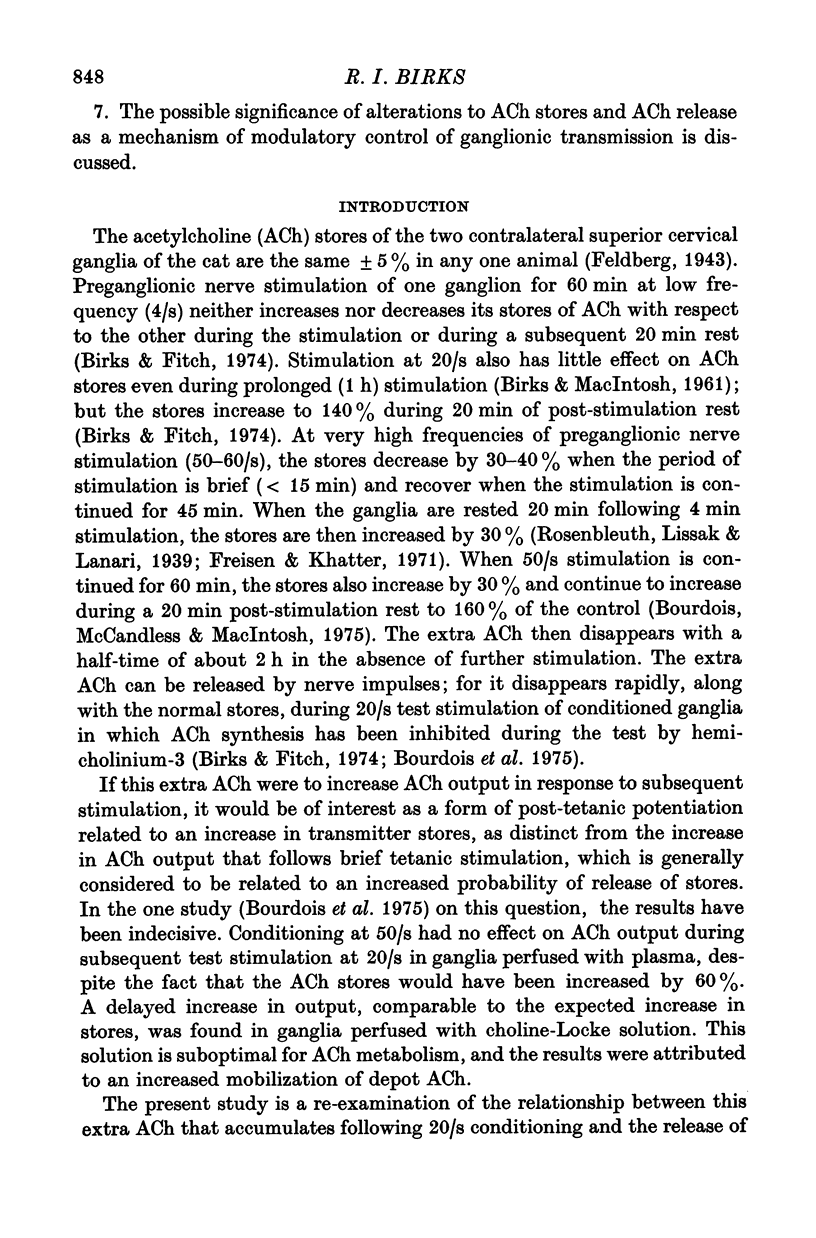
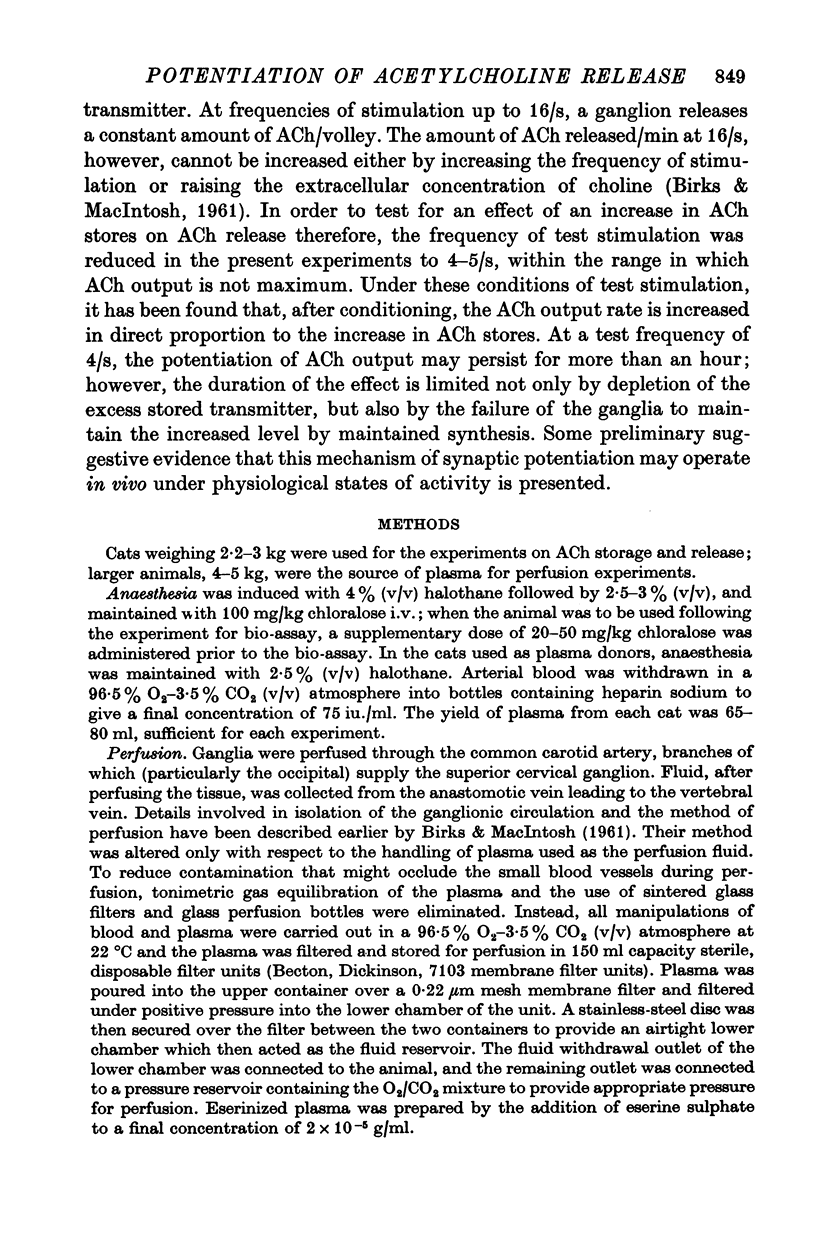
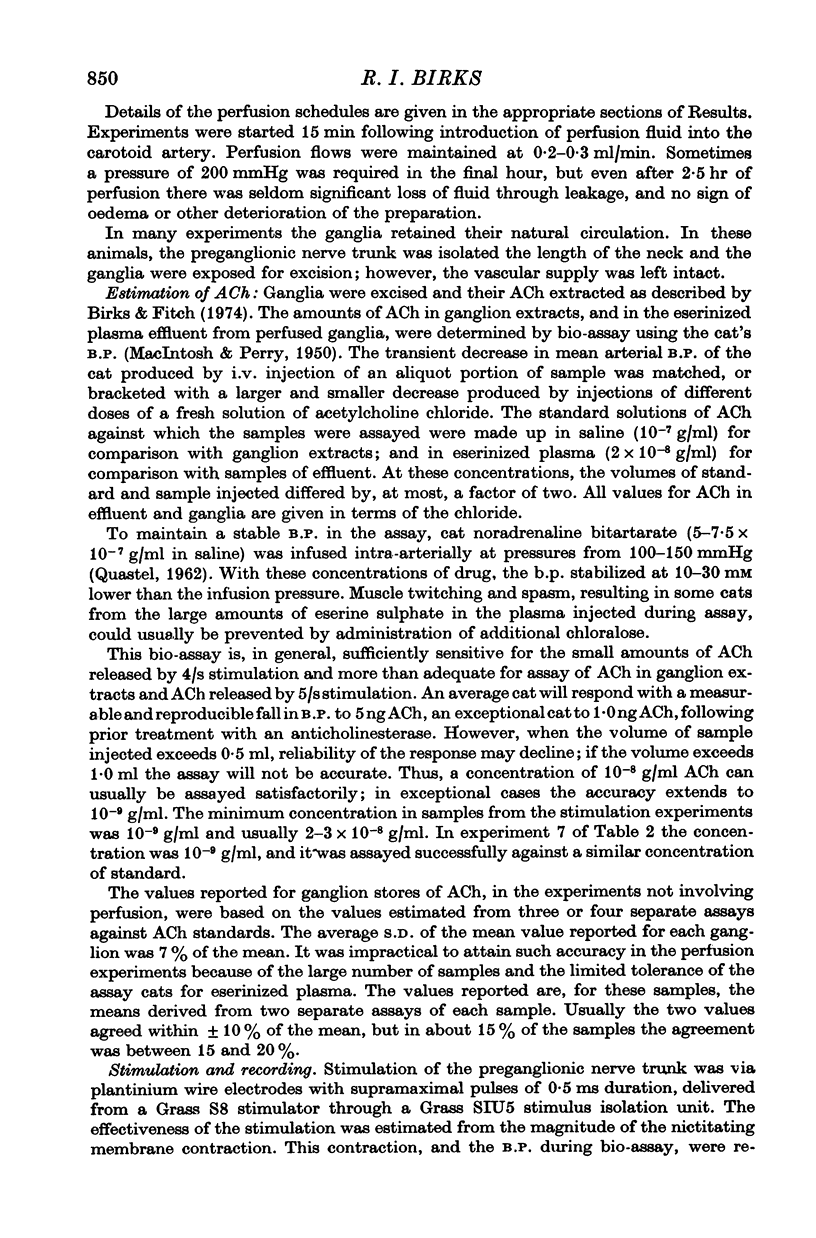
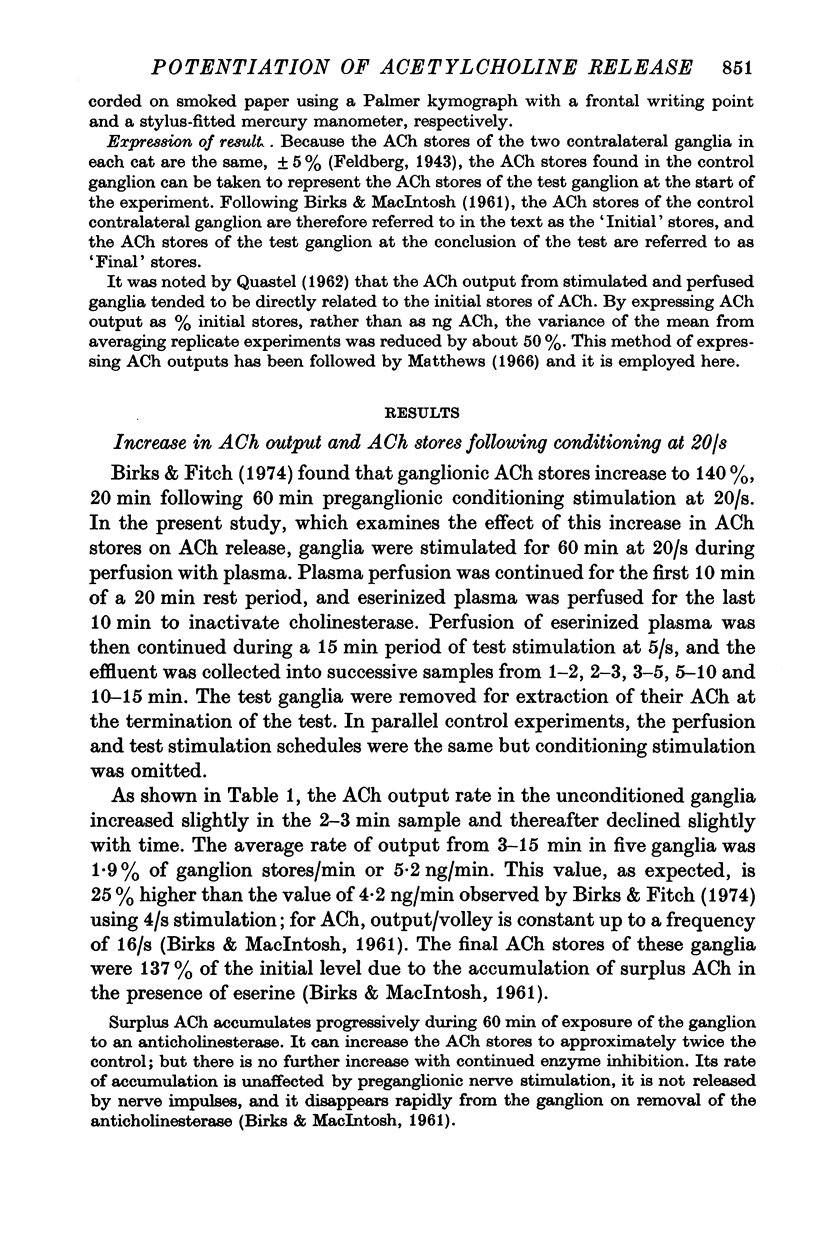
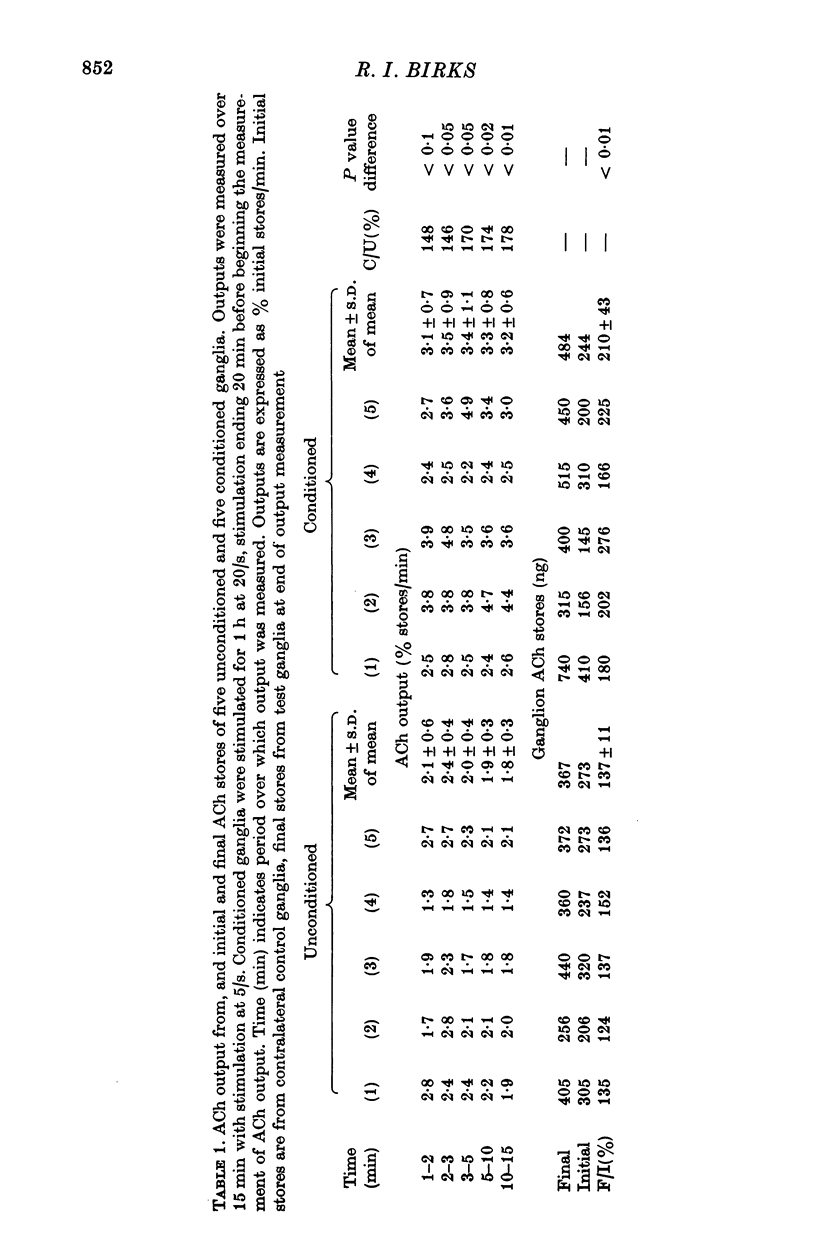

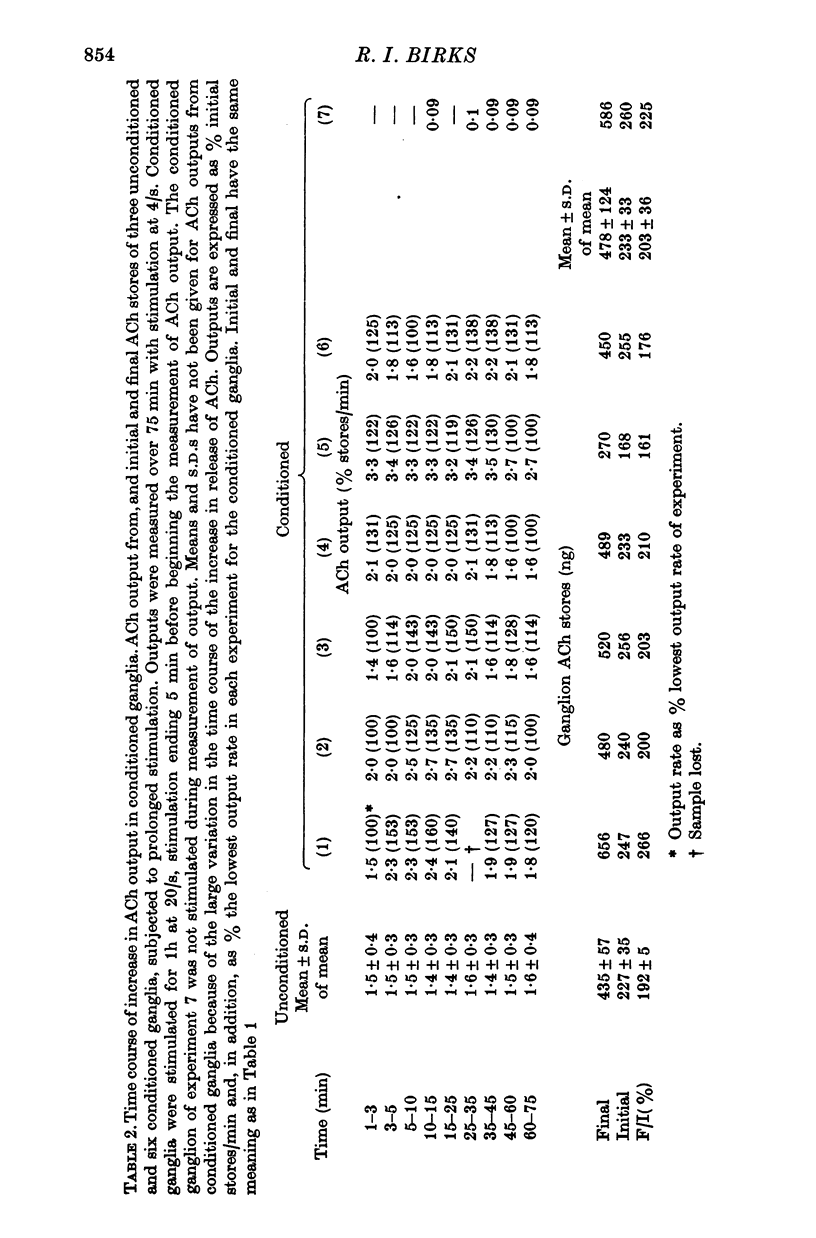



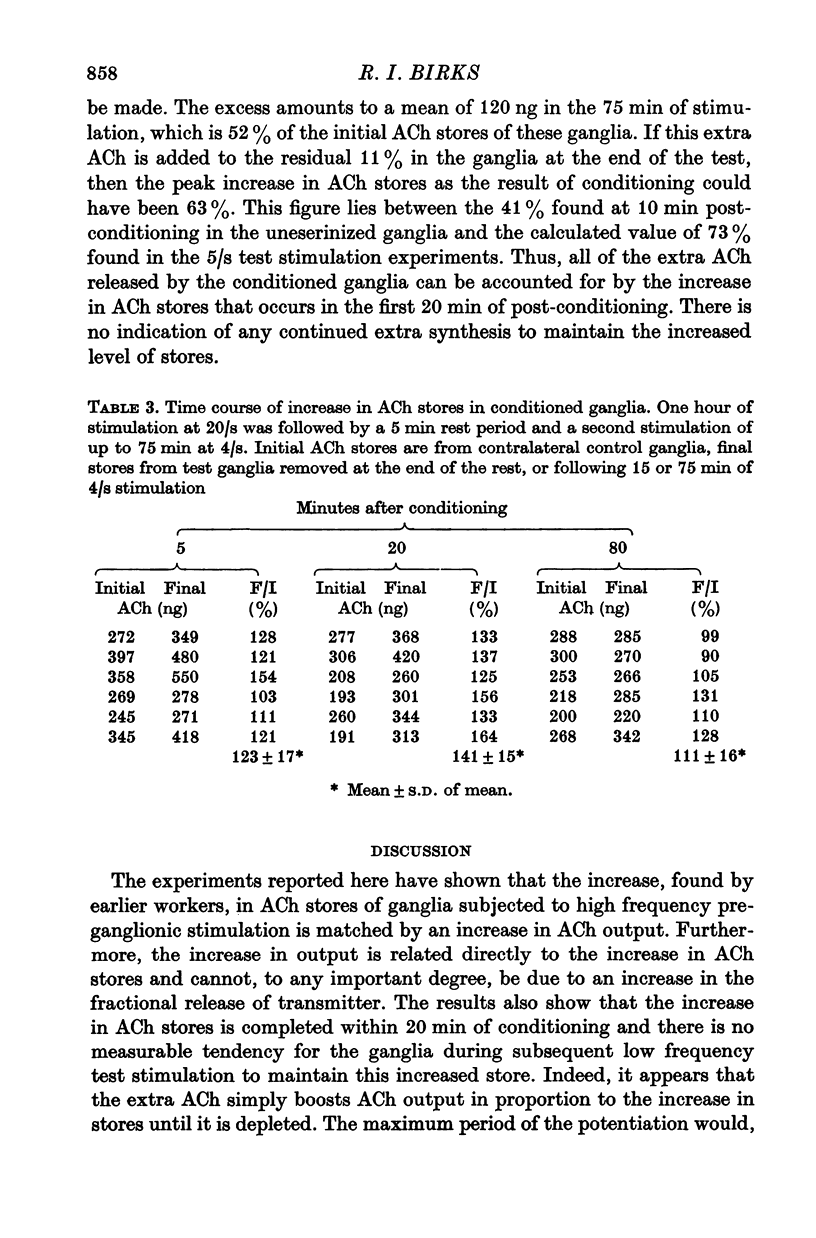
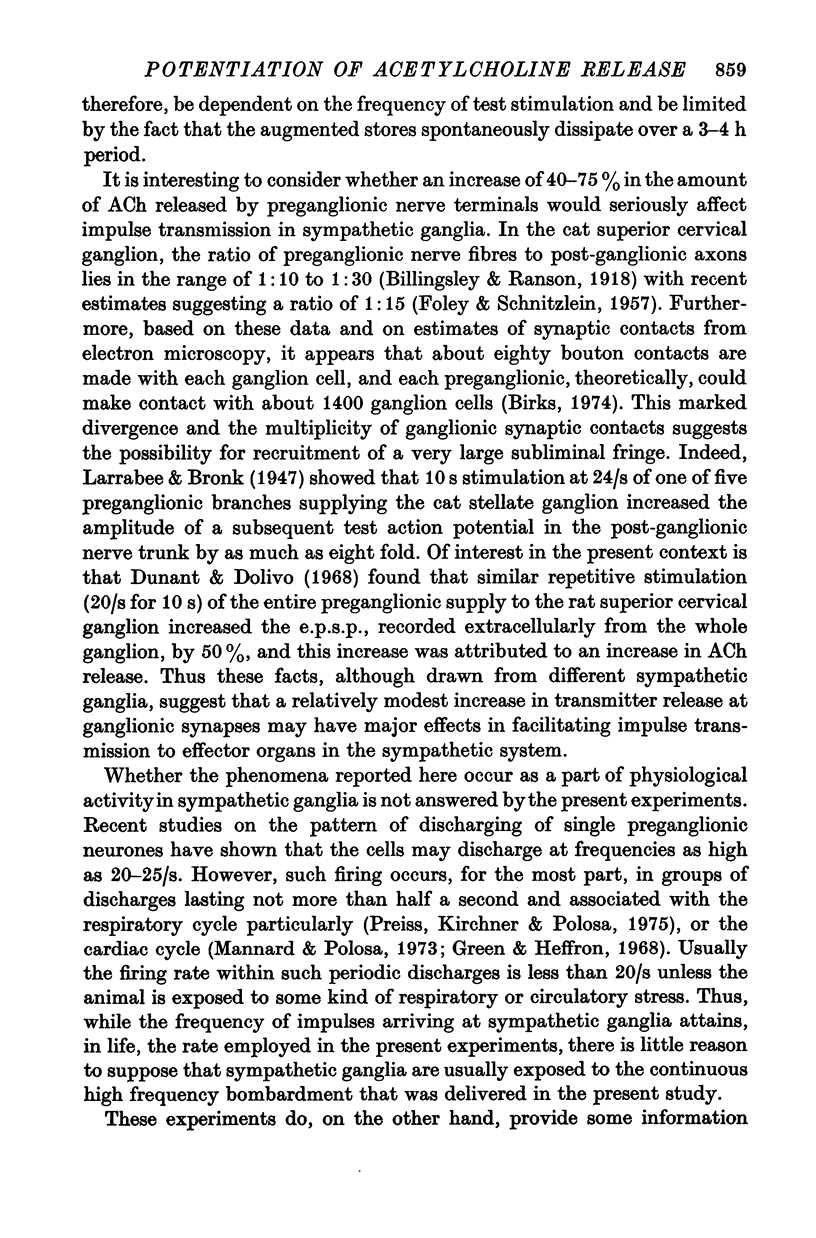
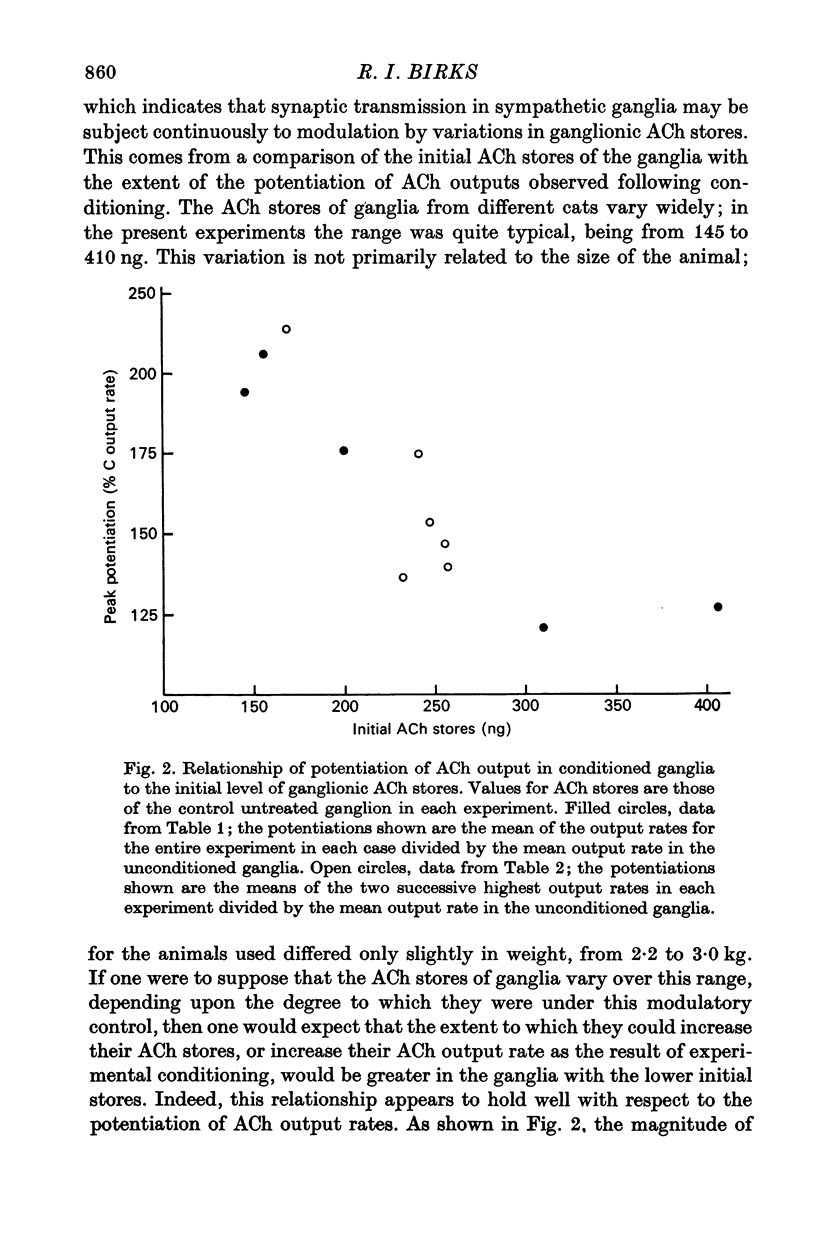
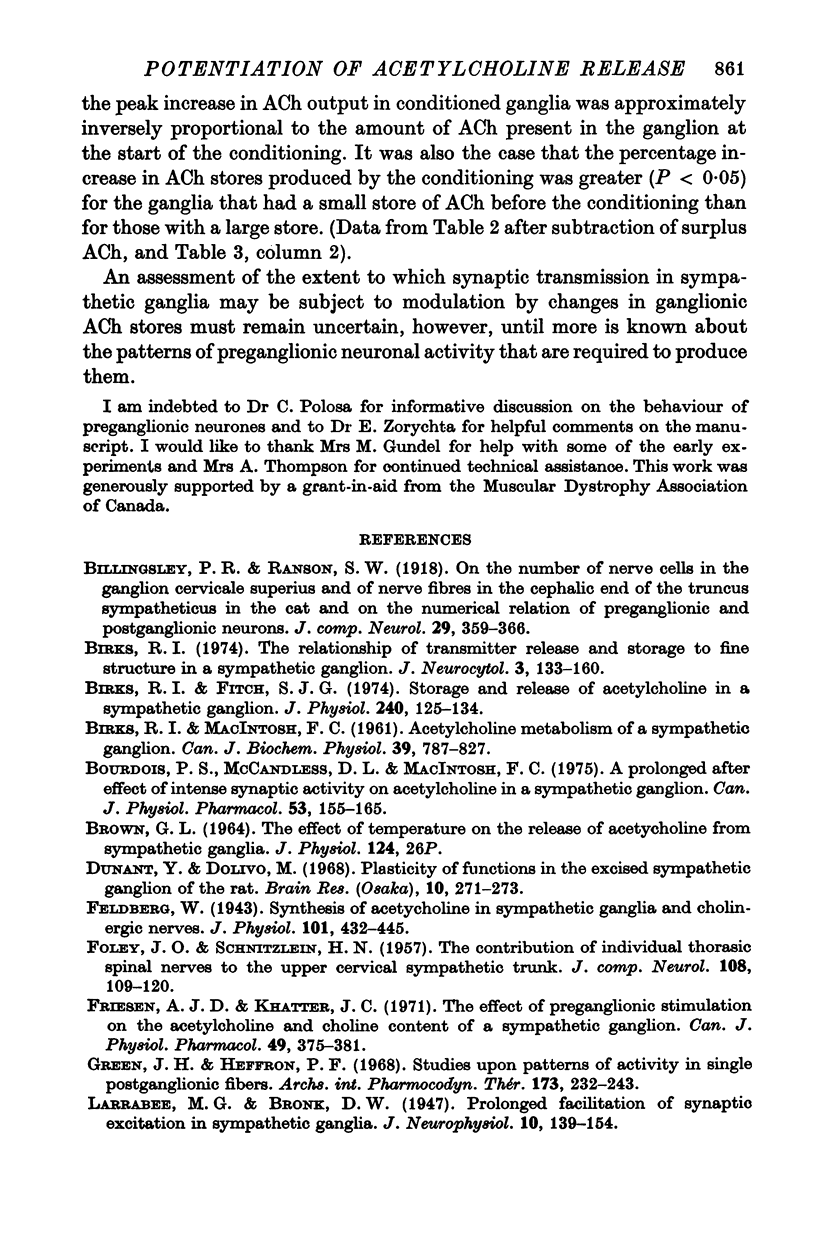
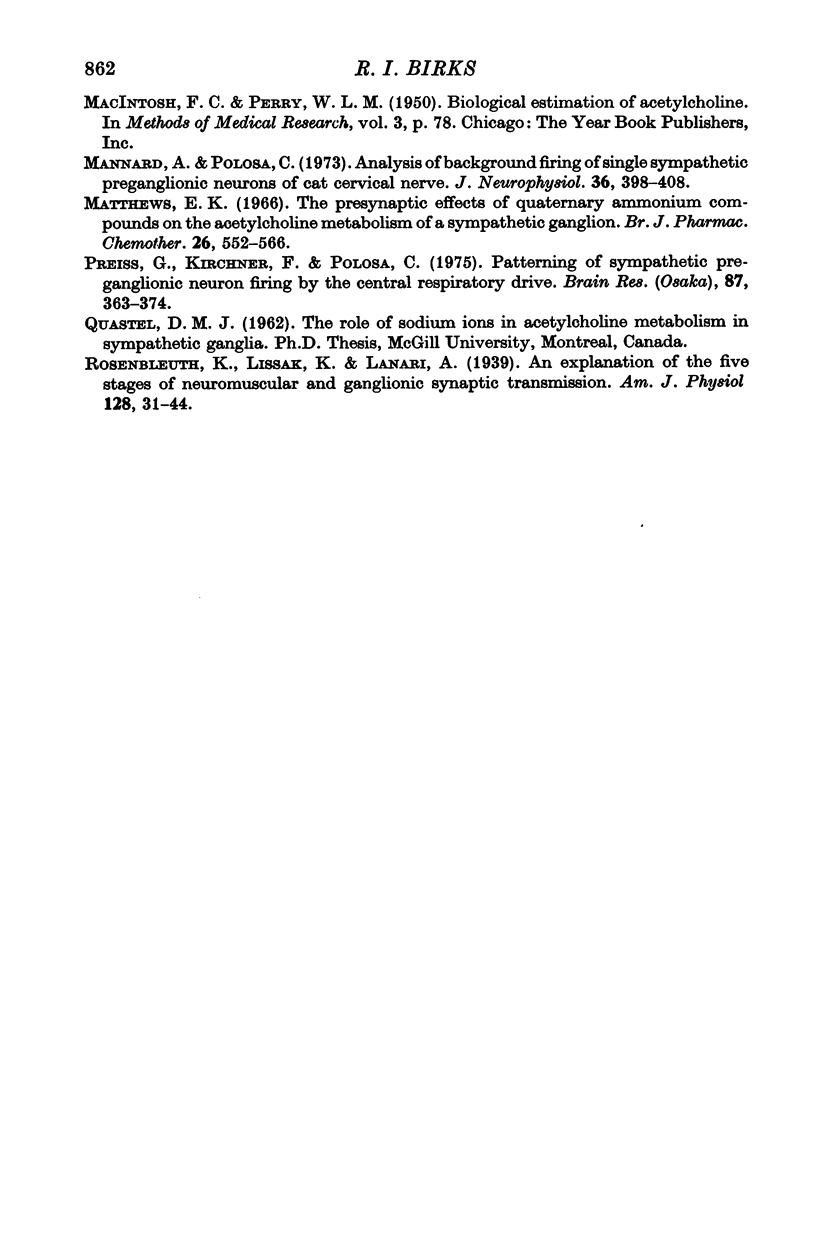
Selected References
These references are in PubMed. This may not be the complete list of references from this article.
- BROWN G. L. The effect of temperature on the release of acetylcholine from sympathetic ganglia. J Physiol. 1954 May 28;124(2):26P–26P. [PubMed] [Google Scholar]
- Birks R. I., Fitch J. G. Storage and release of acetylcholine in a sympathetic ganglion. J Physiol. 1974 Jul;240(1):125–134. doi: 10.1113/jphysiol.1974.sp010603. [DOI] [PMC free article] [PubMed] [Google Scholar]
- Birks R. I. The relationship of transmitter release and storage to fine structure in a sympathetic ganglion. J Neurocytol. 1974 Jun;3(2):133–160. doi: 10.1007/BF01098386. [DOI] [PubMed] [Google Scholar]
- Bourdois P. S., McCandless D. L., MacIntosh F. C. A prolonged after-effect of intense synaptic activity on acetylcholine in a sympathetic ganglion. Can J Physiol Pharmacol. 1975 Feb;53(1):155–165. doi: 10.1139/y75-022. [DOI] [PubMed] [Google Scholar]
- Dunant Y., Dolivo M. Plasticity of synaptic functions in the exised sympathetic ganglion of the rat. Brain Res. 1968 Aug 26;10(2):271–273. doi: 10.1016/0006-8993(68)90134-0. [DOI] [PubMed] [Google Scholar]
- FOLEY J. O., SCHNITZLEIN H. N. The contribution of individual thoracic spinal nerves to the upper cervical sympathetic trunk. J Comp Neurol. 1957 Aug;108(1):109–120. doi: 10.1002/cne.901080106. [DOI] [PubMed] [Google Scholar]
- Feldberg W. Synthesis of acetylcholine in sympathetic ganglia and cholinergic nerves. J Physiol. 1943 Mar 25;101(4):432–445. doi: 10.1113/jphysiol.1943.sp003997. [DOI] [PMC free article] [PubMed] [Google Scholar]
- Friesen A. J., Khatter J. C. The effect of preganglionic stimulation on the acetylcholine and choline content of a sympathetic ganglion. Can J Physiol Pharmacol. 1971 May;49(5):375–381. doi: 10.1139/y71-043. [DOI] [PubMed] [Google Scholar]
- Green J. H., Heffron P. F. Studies upon patterns of activity in single post-ganglionic sympathetic fibres. Arch Int Pharmacodyn Ther. 1968 May;173(1):232–243. [PubMed] [Google Scholar]
- Mannard A., Polosa C. Analysis of background firing of single sympathetic preganglionic neurons of cat cervical nerve. J Neurophysiol. 1973 May;36(3):398–408. doi: 10.1152/jn.1973.36.3.398. [DOI] [PubMed] [Google Scholar]
- Matthews E. K. The presynaptic effects of quaternary ammonium compounds on the acetylcholine metabolism of a sympathetic ganglion. Br J Pharmacol Chemother. 1966 Mar;26(3):552–566. doi: 10.1111/j.1476-5381.1966.tb01836.x. [DOI] [PMC free article] [PubMed] [Google Scholar]
- Preiss G., Kirchner F., Polosa C. Patterning of sympathetic preganglionic neuron firing by the central respiratory drive. Brain Res. 1975 Apr 11;87(2-3):363–374. doi: 10.1016/0006-8993(75)90434-5. [DOI] [PubMed] [Google Scholar]


